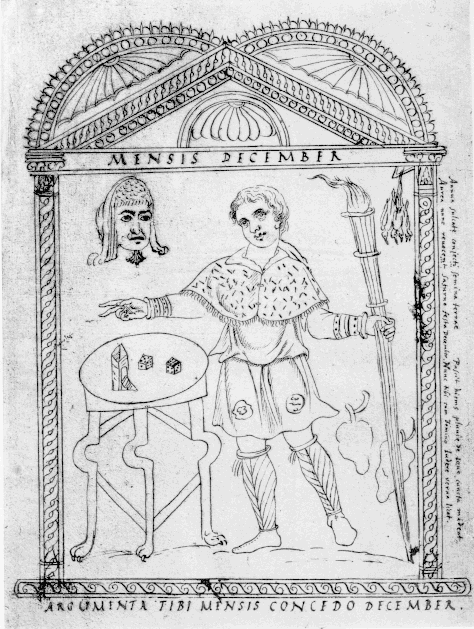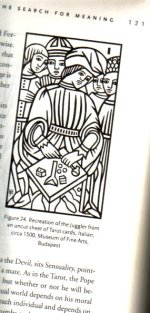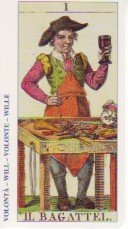kwaw
December from the calendar in Chronography of 354

With the tower like dice shaker one is tempted to form an analogy between the two falling figures of the tower card with falling dice.
21 being the number of combinations of a pair of dice, could the relationship with dice be related to the prevalence of 'pairs' in the TdM sequence: how many cards with pairs would you agree there are:
Pair of cardinals/columbs in Pope
Pair of women in Lovers
Pair of horses/wheels in Chariot
Pair of scales in Justice
Pair of tree trunks in Hanged Man
Pair of cups/wings in Temperance
Pair of acolytes in Devil
Pair of falling figures in House of God
Pair of vases/trees (and in some versions birds) in Star
Pair of dogs/towers in Moon
Pair of twins in Sun
Pair of sticks held by figure (in some versions of ) in World
Humanlike:
Cardinals, woman, acolytes, falling figures, twins
Animals:
Horses, dogs
Props:
Scales, tree trunks, cups, vases, sticks, wings, columbs, wheels, towers.
Any more? Or any of the above you disagree with as too much of a stretch? Rosanne has pointed out to pairs of hands and heads in death, which take me to 13 cards with pairs, which is a bugger, I was hoping for a nice round figure like 12
Kwaw

With the tower like dice shaker one is tempted to form an analogy between the two falling figures of the tower card with falling dice.
21 being the number of combinations of a pair of dice, could the relationship with dice be related to the prevalence of 'pairs' in the TdM sequence: how many cards with pairs would you agree there are:
Pair of cardinals/columbs in Pope
Pair of women in Lovers
Pair of horses/wheels in Chariot
Pair of scales in Justice
Pair of tree trunks in Hanged Man
Pair of cups/wings in Temperance
Pair of acolytes in Devil
Pair of falling figures in House of God
Pair of vases/trees (and in some versions birds) in Star
Pair of dogs/towers in Moon
Pair of twins in Sun
Pair of sticks held by figure (in some versions of ) in World
Humanlike:
Cardinals, woman, acolytes, falling figures, twins
Animals:
Horses, dogs
Props:
Scales, tree trunks, cups, vases, sticks, wings, columbs, wheels, towers.
Any more? Or any of the above you disagree with as too much of a stretch? Rosanne has pointed out to pairs of hands and heads in death, which take me to 13 cards with pairs, which is a bugger, I was hoping for a nice round figure like 12
Kwaw



